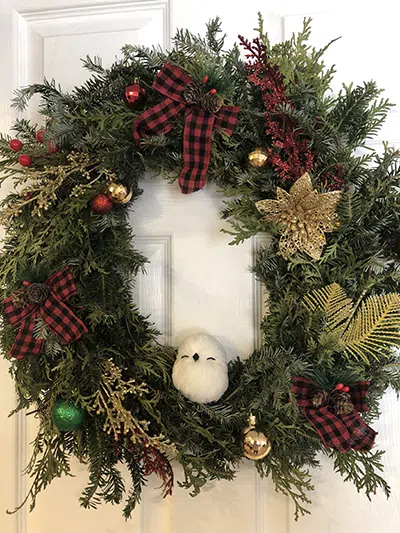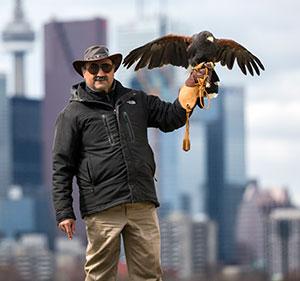Opossums found in Ontario (Virginia Opossums) breed two or three times each year, between February and September. Opossums are the only marsupial in North America; a mother will carry and nurse her young in her pouch for about 2 months. Let’s find out what to do, if one of those little ones shows up without mum.

Identifying a Baby Possum
Possum babies, often called pups, or joeys, are born blind and without any fur or hair. They are teeny tiny and embryonic-looking, only about ½ inch long. That’s because they do much of their growing and development in the pouch, after birth. At birth, no ears are visible and the eyes are merely dark spots. Their tails and hind feet are not yet fully developed.
Pink or Grayish Skin
A newborn baby opossum’s skin will likely be pink or grayish, again, looking more like an embryo with no hair visible.
Fur Coverage
Fur begins to develop when they are 2-3 inches long, about 14 days old. Opossum fur is layered to help with temperature regulation and to protect the animal from harsh weather. It consists of a dense undercoat that is white with grayish or brownish tips and a top layer of longer, often coarser, straight hair that sticks out through the undercoat. This top layer is called ‘guard hair’.
Visible Ears and Eyes
Once developed, the ears are hairless, appearing mostly black with a pink or brownish tip. And, contrary to popular belief, their eyes are not completely black. They do have pupils and an iris but since they are nocturnal creatures, their pupils are so dilated that, at least from a distance, their entire eye appears black.
Rat-like Tail
Opossums have hairless, prehensile tails; essentially an extra appendage that can be used to carry food or to stabilize while climbing. Baby Possums can even use it to hang upside down from a tree branch for short periods.
Assessing the Situation
When discovering what looks to be a stranded baby possum, the most critical factor is to determine its age and whether there is need for intervention.
How old is the Possum Baby?
An opossum baby will need help if it weighs less than ½ lbs. and measures less than 7 inches long (excluding the tail). And, if its eyes are still closed, then the baby is definitely too young to survive on its own.
Is the Possum Truly Orphaned?
Stuff happens. Opossums with babies travel for food. Joeys fall out of pouches or slide off of mum’s back. If the joey is too young to survive on its own, the mother will return and retrieve her troublesome offspring. The baby will make ‘sneezing’ sounds to signal its involuntary dismount and the mother will make a ‘ch ch’ sound in return. If you hear this, or see the mother, back away and let her take over.
If the baby has a thick grey coat and its eyes are open, it is likely mature enough to fend for itself and the mother will not come back.
Signs of Injury or Distress
Open wounds or visible cuts, of course, are easily detected. But apart from that, opossums also have a screeching distress call. In either of those scenarios, your assistance is needed.
 Immediate Steps to Take
Immediate Steps to Take
If you find what you believe to be an orphaned opossum, first observe its physical state and have a look around for its mother. If you can, determine how big or old the little one is and whether it will be able to survive on its own.
Ensuring Your Safety
Again, let’s first make sure that Mamma Possum isn’t nearby and waiting to retrieve her baby. If you are certain that the little one is alone and in need of help, it’s time to call in a wildlife service, capable of rehabilitation.
Creating a Temporary Safe Space
Depending on its age and presence of fur, decide if a temporary safe space requires a heat source. A water bottle, wrapped in a towel will do the trick.
Do's and Don'ts of Baby Possum Care
Wear Thick Gloves
If you need to handle the baby opossum, wear gloves. Even at birth, the front paws and claws are fully developed and a frightened joey may not necessarily welcome being picked up.
Support the Entire Body
Do not pick a baby possum up by the scruff. Place one hand under its belly and the other under its back end.
Minimize Direct Contact
You will not be able to care for a very young opossum. The little one will likely not be comforted by your touch or presence. Also, possums frequently carry lice and parasites - best not risk transmission.
Feeding and Hydration (Why It's Best Left to Professionals)
Baby Opossums drink their mother’s milk EXCLUSIVELY during their first 2 months of life and intermittenly for another month thereafter. Do NOT give dairy milk to the baby. Ideally, call a Wildlife Centre and ask them to pick up your little charge. If that is not an option, you’ll have to purchase something like KRM (Kitten Replacement Milk, often found in pet stores) and offer this in an eye dropper or syringe. Baby possums need to feed frequently and they HAVE to be warm before and during feeding.
Preventing Future Possum Encounters
Opossums aren’t terribly cute or entertaining to have around. They’re quite smelly, too. They are opportunistic feeders, like much of our urban wildlife, and we should keep them away from our homes as best as possible.
Securing Your Property
Ensuring that there is no access to outbuildings or that lovely space beneath your deck can go a long way in making your home less inviting to wildlife.
Removing Attractants
Safely secure your trash can lids or storing them indoors, if possible. Remove outdoor pet dishes.
When to Seek Professional Possum Removal Services
If you are concerned about opossums roaming around your yard or moving into your space, call Hawkeye Bird & Animal Control. Our licensed wildlife removal technicians are at your service.














